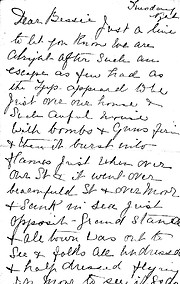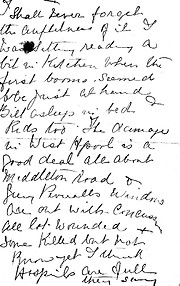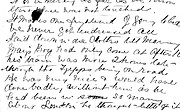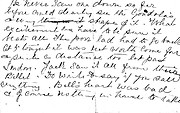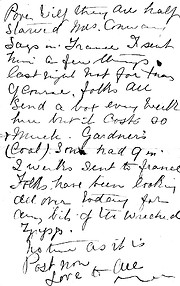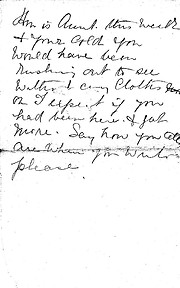 Hartlepool Sports & Leisure
Hartlepool Sports & Leisure
- Cinemas, Theatres & Dance Halls
- Musicians & Bands
- At the Seaside
- Parks & Gardens
- Caravans & Camping
- Sport
 Hartlepool Transport
Hartlepool Transport
- Airfields & Aircraft
- Railways
- Buses & Commercial Vehicles
- Cars & Motorbikes
- The Ferry
- Horse drawn vehicles
 A Potted History Of Hartlepool
A Potted History Of Hartlepool
- Unidentified images
- Sources of information
- Archaeology & Ancient History
- Local Government
- Printed Notices & Papers
- Aerial Photographs
- Events, Visitors & VIPs
 Hartlepool Trade & Industry
Hartlepool Trade & Industry
- Trade Fairs
- Local businesses
- Iron & Steel
- Shops & Shopping
- Fishing industry
- Farming & Rural Landscape
- Pubs, Clubs & Hotels
 Hartlepool Health & Education
Hartlepool Health & Education
- Schools & Colleges
- Hospitals & Workhouses
- Public Health & Utilities
- Ambulance Service
- Police Services
- Fire Services
 Hartlepool People
Hartlepool People
 Hartlepool Places
Hartlepool Places
 Hartlepool at War
Hartlepool at War
 Hartlepool Ships & Shipping
Hartlepool Ships & Shipping

Zeppelin Raids on Hartlepool
Zeppelin Raids on the Hartlepools
There were three German air raids on the Hartlepools during the First World War. On the night of 8th August 1916 the first Zeppelin Raid took place, during which two bombs were dropped in a field near the districts of Foggy Furze and Longhill in West Hartlepool, damaging houses nearby.
On 27th November 1916 the second Zeppelin raid took place raid over West Hartlepool. It damaged many shops and houses inland, to the west of the West Hartlepool docks. The Zeppelin was brought down by Lieut I.V. Pyott R.F.C. (Royal Flying Corps.)
The third attack was on 13th March 1918. The Zeppelin probably intended to bomb the docks, but only succeeded in damaging some domestic housing.
Zeppelin History
Zeppelins were originally named after Count von Zeppelin, a retired German army officer. He developed his design, and flew his first airship in 1900. The airship was made up of a large balloon, filled with hydrogen, which is lighter than air, to make it go upwards. Underneath the balloon, is a “gondola” or cabin, which contains the controls. The Zeppelins could have four Mercedes engines of 200 horse power each, and its direction and height could be controlled, by vertical rudders and horizontal elevators, to a much greater extent than an ordinary balloon in which only the height can be controlled by the use of ballast.
Count von Zeppelin persuaded the Kaiser to buy his air ships. They were successfully tested before June 1908, and the Kaiser was informed of this. The first Zeppelin was bought in 1909. By the outbreak of war in 1914 the Germans had seven Zeppelins.
With the deadlock of trench warfare, Germany started to attack British towns from the air. The victims were mainly on the east coast of England – King’s Lynn, Great Yarmouth and Hull, in 1915. On 4th April 1915 there was a Zeppelin raid over Northumberland, the most northerly county in England.
The First Attack, 8th August, 1916
The first Zeppelin to attack the Hartlepools was heard before it was seen. The weather was cloudy, and the airship was travelling at a height of about two miles. She was travelling at about sixty-five to seventy miles per hour. The Zeppelin moved about as if not certain of the target. Then two bombs were dropped in a field at Longhill, damaging houses nearby. The Zeppelin then went away.
The Second Zeppelin Raid –27th November 1916.
A Zeppelin crossed the coast a few miles to the north of Hartlepool, near Blackhall, away from the town and was not engaged by coastal defences. It passed over Norton and Stockton tracked by searchlights, one of which was sited near Elwick, and one at Hutton Henry (two villages to the west of Hartlepool). The Zeppelin doubled back, but was caught by the searchlight at Elwick and fired on by anti-aircraft guns. It dropped thirteen bombs on Elwick, perhaps trying to put the searchlight out of action. All it succeeded in doing was making holes in fields and injuring two cows. One bomb dropped very close to Dovecote Farm.
Four bombs (high explosives) were then dropped in fields near West Park, the suburb of West Hartlepool nearest to Elwick. This was probably intended to lighten its load, and increase its chance of escape. Windows were broken in some houses there. Two bombs fell in nearby Ward Jackson Park. One landed by the side of the lake and another on a terrace walkway. A plaque was placed there later to commemorate the event. After that, the Zeppelin headed for the coast. The airship may have been hit at that time as aeroplanes had already been mobilised in the towns’ defence. It sailed over West Hartlepool, was again caught in searchlights again, and fired at. It flew into the light, at about 9000 to 10,000 feet. (About 3000 metres.) Hundreds of shells were aimed at it. People standing in Church Square heard and saw the approaching airship. It seemed to be aiming for them, and they ran for cover. At this point it changed course going over some nearby streets. In this area the houses were small, and the streets packed close together.
The Zeppelin then dropped a total of twenty-nine bombs in the Hartley Street, Lowthian Road and Poplar Grove area. One bomb fell on the pavement in front of No.15 Hartley Street. The front of the house was blown in and a paving stone was hurled across the street to land on the stairs of the house opposite. No.6 Lowthian Road was completely wrecked. The husband and wife who lived there were injured and taken to Cameron Hospital. The roadway was damaged in Poplar Grove and houses severely damaged, particularly Nos.2 and 4 where a man was badly injured. The bombs later appeared to have been dropped in pairs, one from the port and one from the starboard side of the airship. Two people died of injuries sustained in the attack. The Zeppelin zigzagged in an attempt to break free from the searchlights, but by now it could be seen that theairship was on fire and was dropping its bombs in a haphazard way.
Some of these bombs landed on allotments and the football ground where the stand was severely damaged. It had been attacked by an aircraft piloted by Lieut. I Pyatt of No.36 squadron based at Seaton Carew aerodrome and flames were coming from it as it passed over St Hilda’s church at about midnight. A tracer or incendiary shell caused the fire in the airship. It very rapidly became engulfed with flame and went into the sea 800 yards beyond the old lighthouse at between 11.45 and midnight. It burned for half an hour before sinking and could be seen twenty miles away (32 kilometres) as it burned. Parts of it were later washed up on the shore.
On January 11th 1917 the burial took place at Seaton Carew of two of the Zeppelin's crew whose bodies had been washed ashore; they were re-interred in the War Grave Cemetery at Cannock Chase in 1962. Three other crew members were subsequently recovered from the sea, but there are no details of where they were buried.
Third Attack, March 13th 1918
The Zeppelin crossed the coast heading north about 9.30pm. It was flying at a high altitude and was not visible from the ground. No sound of propellers was heard, possibly because the airship cut its engines and glided in, so as not to be attacked by anti-aircraft guns. The Zeppelin dropped bombs on Middleton Beach and Old Town, where the roof of the Normanby Hotel in was blown in. It then moved inland, dropping bombs on fields - “Thompson’s spring wheat by way of the workhouse” The defence guns fired, but could not see or hear their target. It moved over the timber ponds and docks and was probably aiming for the railway and the Goods Station. A bomb was dropped on the seaward side of Mainsforth Terrace. It damaged iron sheds beside the N.E.R. railway. It also damaged the Exchange School, offices and soldiers’ billets. Bombs were dropped on Burbank, Temperance, Frederick and Whitby Streets. Eight people in all were killed. Twenty-two people were injured, mostly by cuts from broken glass.
Why the Zeppelins were failures
There was no military purpose in the Zeppelins’ air raids, their intention was to reduce the morale of the British, and weaken the war effort, which the raids failed to do totally. The Zeppelins were failures because of their inaccuracy of bombing and the small size of their bombs. They had to fly very high, about three kilometres above sea level because they were very big, and made easy targets. The Zeppelins travelled at night to improve their chances of not being seen. This made it difficult to find their way. Navigation at the time was very basic in comparison with today’s methods, and they had no radar. They were also slower than ordinary aeroplanes, and thus easily attacked by them. Frederick Miller, a local author writing at the time said, “They were too big to fly low, and in cloudland they were as lost explorers in Polar regions. It must be admitted that they gave us a great deal of trouble and anxiety.”
Related items :
 November Raid Letter
November Raid Letter
A 6-page letter written by Frances Mary Cornforth who was living at 9 Throston St at the time of the Zeppelin raid, on 27th December, 1916. The Wilf referred to at the end of the letter was her son serving on the front in the Royal Garrison Artillery Regiment.
For a full transcript see the Note 'November Raid Letter - Transcript'
 November Raid Letter - Transcript
November Raid Letter - Transcript
Tuesday night
Dear Bessie,
Just a line to let you know we are alright after such an escape as few had as the Zepp appeared to be just over our house and such awful noise with bombs and guns firing and then it burst into flames just when over our street and it went over Beaconsfield Street and over moor and sank in sea just opposite grand stand and all town was out to see and folks are undressed and half -dressed flying up moor to see it go down. I shall never forget the awfulness of it. I was sitting reading a bit in the kitchen when the first booms seemed to be just at hand. Bill asleep in bed and kids too. The damage in West Hpool is a good deal all about Middleton Road and ………… windows are out with concussion all lot wounded and some killed but not known yet I think hospitals are full they say. It is a mercy as far as we know this place was not touched. It makes one very frightened of going to bed one never got undressed all laid down in our clothed till morning. May’s boy had only come at after 10 his train was more 2 hours late through the Zepps being on the road. He was very nice and would have done badly without him as he had been in so many about London he thought little of it. He never saw one down so far before and could clearly see the gondolas and every shape of it beats all. The poor lad had to go back at 5 tonight it was not worth come for and such a distance too lot past London, Jack saw it all from their billet. Do write and say if you saw anything. Bill’s heart was bad and of course nothing in the house to take. Poor Wilf they are half starved Mrs Conway says in France. I sent him a few things last night not for Xmas of course folks are send a lot every week him but it costs so much. Gardener’s (coal) son had gin 2 weeks sent to france. Folks have been looking all over today for any bits of the wrecked Zepps.
No time as it is post now
Love to all
How is Aunt this week and your cold you would have been rushing out to see without clothes on I expect if you had been here and got nerve. Say how you all are when you write please.
More detail » Plaque in Ward Jackson Park.
Plaque in Ward Jackson Park.
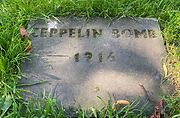 Donated by Ron Smith
Donated by Ron SmithDated 1916
This photograph is of the plaque which was laid in Ward Jackson Park to commemorate the night of the 27th November 1916 when the town was raided by a Zeppelin plane and one of the bombs dropped by the Zeppelin landed in Ward Jackson Park.
More detail » Zeppelin 1916 (1)
Zeppelin 1916 (1)
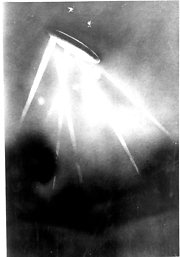 Donated by Hartlepool Library Service
Donated by Hartlepool Library ServiceDated 1916
A Schutte Lanz Zeppelin caught in search lights near Elwick in an air raid on Hartlepool just before midnight on 27 November 1916.
More detail » Zeppelin 1916 (2)
Zeppelin 1916 (2)
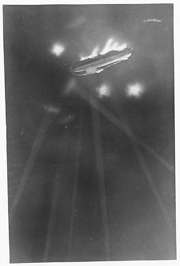 Donated by Douglas Ferriday
Donated by Douglas FerridayPart of the Hartlepool Library Services collection
Dated 1916
A Schutte Lanz Zeppelin caught in search lights near Elwick in an air raid on Hartlepool just before midnight on 27 November 1916.
More detail » Zeppelin 1916 (3)
Zeppelin 1916 (3)
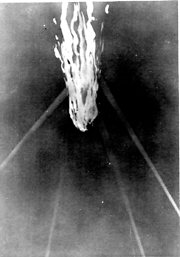 Donated by Hartlepool Library Service
Donated by Hartlepool Library ServiceDated 1916
A Schutte Lanz Zeppelin caught in search lights near Elwick in an air raid on Hartlepool just before midnight on 27 November 1916.
More detail » Zeppelin fragment
Zeppelin fragment
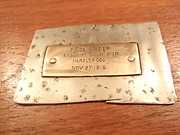 Donated by Wendy Denison
Donated by Wendy DenisonDated 1916
This metal fragment, 3" x 2", has a brass plate attached which is inscribed, "piece of Zep brought down over Hartlepool Nov-27-1916". It is assumed to be from the airship which caught fire over Hartlepool during the raids on the town during the First World War.
More detail »





